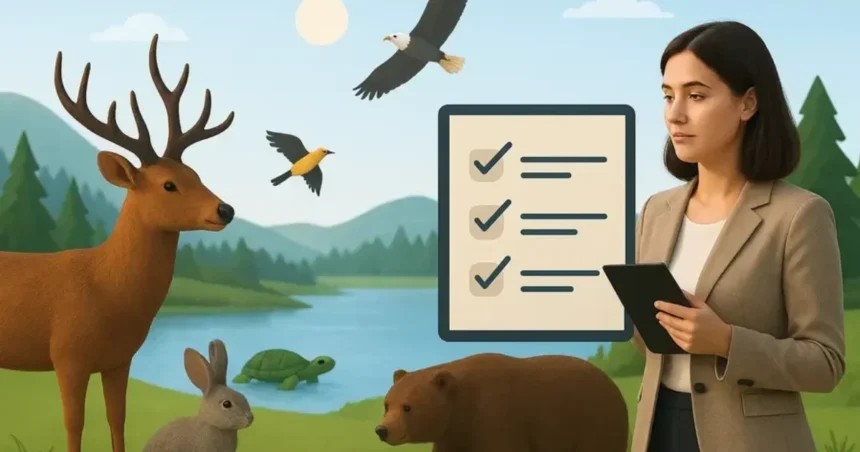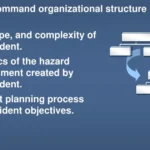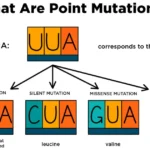Hey there, friend. Have you ever stopped to think about the wild animals roaming our forests, rivers, and skies? From the majestic bald eagle soaring high to the sneaky fox darting through the underbrush, wildlife is all around us, playing a huge role in keeping our planet balanced and beautiful. But managing these resources isn’t just about letting nature do its thing—it’s about smart, thoughtful care to make sure they stick around for our kids, grandkids, and beyond. So, what provides the set of guiding principles for managing wildlife resources? Drumroll, please… It’s the North American Model of Wildlife Conservation.
Don’t worry if that sounds a bit formal—I’ll break it down in a way that’s easy to grasp, like chatting over coffee. This model isn’t some dusty old rulebook; it’s a living, breathing set of ideas born from real lessons learned the hard way. Picture this: Back in the late 1800s and early 1900s, North America was a wild frontier. People hunted without limits, turning animals like the passenger pigeon into ghosts of the past and nearly wiping out the mighty American bison. Folks realized, “Whoa, we can’t keep this up!” Sportsmen, conservationists like Theodore Roosevelt, and everyday nature lovers stepped up. They crafted these principles to protect wildlife while allowing fair use. Today, this model guides how we handle everything from deer seasons to bird migrations in the U.S. and Canada. It’s why we have thriving populations of elk, ducks, and fish that we can enjoy responsibly.
In this article, we’ll dive into the heart of the North American Model, explore its seven key principles (with a handy table to make it crystal clear), and chat about why it matters. Whether you’re a kid dreaming of your first fishing trip or an adult pondering the big picture of our environment, you’ll walk away feeling inspired and informed. Let’s get into it!
A Quick Peek at the History: How We Got Here
Imagine the American West in the 1800s—vast herds of bison thundering across the plains, skies darkened by flocks of passenger pigeons. But unchecked hunting for food, fur, and profit changed all that. By the 1890s, bison numbers plummeted from millions to just a few hundred, and the passenger pigeon? Extinct by 1914. It was a wake-up call. Hunters and anglers, who loved the outdoors, weren’t okay with this. They formed groups like the Boone and Crockett Club and pushed for change.
Enter the North American Model. It wasn’t slapped together overnight; it evolved through laws like the Lacey Act of 1900 (which banned selling wild game across state lines) and the Migratory Bird Treaty Act of 1918. By the early 1900s, sportsmen in the U.S. and Canada had solidified seven principles. These weren’t just rules—they were a promise: Wildlife belongs to everyone, and we’ll manage it wisely. Fast-forward to today, and this model has helped restore species like the white-tailed deer (from near extinction to over 30 million strong) and wild turkeys (from 30,000 to 7 million). It’s a story of people turning tragedy into triumph, proving that humans and wildlife can coexist if we play by the right guidelines.
The Seven Guiding Principles: Your Roadmap to Wildlife Wisdom
At the core of the North American Model are seven principles that act like a compass for wildlife managers—those dedicated pros in government agencies who study habitats, count animals, and set rules. These aren’t arbitrary; they’re based on science, fairness, and sustainability. They ensure wildlife isn’t hoarded by the wealthy or wasted for profit, but shared and protected for all.
To make this super easy to follow, I’ve put together a full table below. It lists each principle, a simple explanation, and a real-life example. Think of it as your cheat sheet—no fancy jargon, just straightforward info.
| Principle Number | Principle Name | Simple Explanation | Real-Life Example |
|---|---|---|---|
| 1 | Wildlife as Public Trust Resources | Wildlife belongs to everyone, held in trust by governments for current and future generations. No one person or company owns it, even if they own the land. | In national parks like Yellowstone, bison roam freely because they’re public property. Everyone can see them, but no one can claim ownership or sell them off. This keeps populations healthy for all to enjoy. |
| 2 | Prohibition on Commerce of Dead Wildlife | You can’t hunt or fish just to sell the meat, fur, or parts commercially. This stops mass slaughter for profit and keeps markets from wiping out species. | The Lacey Act makes it illegal to trade illegally taken wildlife. Thanks to this, we don’t have black markets flooding stores with poached elephant ivory or bear gallbladders, protecting global populations. |
| 3 | Allocation of Wildlife by Law | Wildlife use (like hunting seasons or fishing limits) is decided by laws and regulations, not who has the most money or land. This ensures fair access through science-based rules. | State agencies set deer hunting quotas based on population studies. In Texas, for instance, tags are distributed via lotteries so everyday folks get a shot, not just big landowners. |
| 4 | Opportunity for All (Democracy of Hunting and Fishing) | Every citizen, regardless of wealth, status, or where they live, has the right to hunt, fish, or enjoy wildlife—as long as they follow the rules. It’s about equal access. | In Canada, indigenous communities and urban kids alike can get fishing licenses affordably. Programs like youth hunting camps make sure the next generation learns these traditions without barriers. |
| 5 | Wildlife Should Only Be Killed for a Legitimate Purpose | You can only take wildlife for real needs like food, fur, self-defense, or protecting property/livestock. No killing for trophies, fun, or waste—it’s all about respect and ethics. | If a bear raids your chicken coop, it’s okay to defend your property legally. But shooting an eagle just for its feathers? That’s a big no-no under federal law, preserving cultural and ecological value. |
| 6 | Wildlife as an International Resource | Animals don’t respect borders—they migrate across states, provinces, and countries. So, management requires teamwork between governments to protect shared species. | The Migratory Bird Treaty protects ducks flying from Canada to Mexico. U.S., Canadian, and Mexican agencies collaborate on flyways, ensuring healthy populations for hunters and birdwatchers everywhere. |
| 7 | Scientific Management of Wildlife | Decisions come from solid science—studies on populations, habitats, and health—not guesses or politics. Wildlife biologists use data to keep species thriving. | In Michigan, experts track wolf numbers with GPS collars and surveys. If packs grow too big and threaten deer, they adjust hunting rules based on facts, balancing the ecosystem. |
There you have it—a full table that sums up the magic of the model. Each principle builds on the others, creating a strong foundation. For instance, science (principle 7) informs the laws (principle 3), which ensure fair opportunity (principle 4). It’s like a team effort where everyone wins: animals stay abundant, and people get to connect with nature.
Why These Principles Rock: Benefits for Wildlife, People, and the Planet
Now, let’s talk about why this model is such a game-changer. First off, it’s saved species from the brink. Remember those bison? From hundreds left in the wild to over 500,000 today, all thanks to regulated hunting and habitat protection guided by these principles. Ducks, geese, and salmon have bounced back too, filling skies and waters that were once eerily empty.
For people, it’s about fairness and fun. Imagine if only the rich could hunt— that’d leave most of us out in the cold. The model’s democratic vibe means a single mom in Ohio can take her son fishing just like a CEO in New York. Plus, it funds itself! Hunters and anglers pay excise taxes on gear (through acts like Pittman-Robertson in 1937), raising billions—over $25 billion since then—for conservation. That’s money going straight to trails, habitats, and education, not taxes. Even non-hunters benefit from cleaner water, healthier forests, and eco-tourism jobs.
And for the planet? These principles promote balance. By focusing on carrying capacity—the number of animals a habitat can support without breaking—we avoid overpopulation crashes. Think of the Kaibab Plateau in Arizona: In the 1920s, banning hunting led to too many deer, starving them out. Opening it up under the model restored harmony. It’s proof that smart management beats hands-off or heavy-handed approaches.
Real-World Wins: Stories That Bring It Home
Let’s make this personal with some stories. Take the wild turkey. In the early 1900s, only 30,000 roamed the U.S. due to habitat loss and hunting. Applying the model—science to trap and relocate birds, laws to ban market sales, and public funding—turned it around. Now, over 7 million turkeys gobble across the land, and turkey hunting supports rural economies.
Or consider Alaska’s grizzly bears. Principle 6 (international resource) shines here, as bears wander from Canada. Joint U.S.-Canada efforts use science to set sustainable harvest limits, keeping populations stable while allowing traditional indigenous hunts for food.
Even kids get involved! Programs like Project WILD teach these principles in schools, using games to show how habitats work. One classroom activity might simulate migration, highlighting why borders don’t matter to birds. It’s fun, educational, and plants seeds for future stewards.
Challenges and the Road Ahead: Keeping It Fresh
No model’s perfect, right? Climate change is messing with migrations, and urban sprawl eats up habitats. Human-wildlife conflicts—like deer crashing into cars or wolves eyeing livestock—test principle 5. But the model’s adaptable. Scientists now use drones and AI for better data, and communities collaborate on wildlife corridors.
Globally, it’s influencing others. Africa’s community conservancies borrow the “opportunity for all” idea, turning locals into guardians who benefit from eco-tourism. As we face bigger threats like habitat loss (we’ve lost 30% of wildlife since 1970), sticking to these principles—updated with new science—will be key.
Wrapping It Up: Your Role in the Wild Adventure
So, there you have it—what provides the set of guiding principles for managing wildlife resources? Its seven pillars ensure sustainability, fairness, and science lead the way, turning potential disaster into a legacy of abundance. From public trust to international teamwork, it’s a blueprint that’s worked wonders and can keep doing so.







